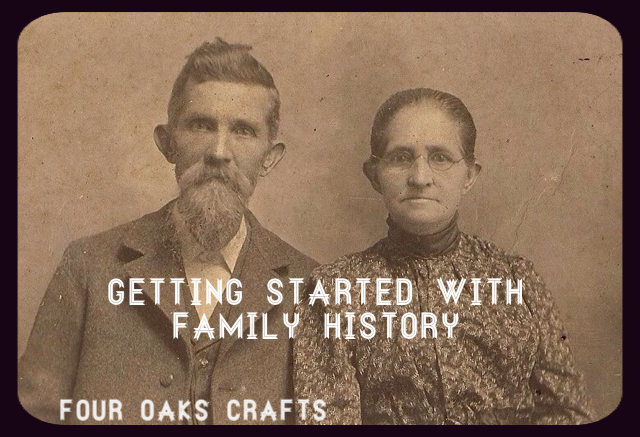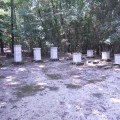Getting started with family history research has never been easier. Over the years, technology has greatly streamlined this hobby.
Though I have had to curtail my family history research in recent years, the hobby of genealogy still pulses in my veins. I actually started this hobby in my late 20’s, which is not what typically happens. Many folks get involved in this endeavor later in life. Fortunately, I had a close relationship with my grandparents and found my curiosity burning when they broke out old photos and talked about family stories. Studying my family history has been one of my most satisfying past-times, and I hope to pass the history and records I’ve collected down to my children and grandchildren.
In school, I found history to be a fascinating subject, but that excitement skyrocketed when I could see my own ancestors right there beside Washington and General Lee. They lived and breathed the same air as Grant, Lincoln, and Teddy Roosevelt. They fought in wars and endured the Great Depression. They were farmers, teachers, and merchants, and they helped build this country.
When I started my career with the power company, a coworker shared his passion for studying his family history. That’s when I became more methodical about my approach and began visiting courthouses, county archives, and libraries.
Though not exhaustive, this post will highlight many of the basics for getting started with this very rewarding hobby. Some of you might even want to make it your profession.
Start with your own family. Write down a list of things you want to discover. Sit down with your parents and grandparents, aunts and uncles, to get their stories first hand. They can tell you the names of their parents and siblings, where they lived in the past, and what professions they followed. Perhaps they’ll share some of their own treasured records or artifacts like the family Bible, a diary, or old photos.
Ask your parents or grandparents if you can tape their stories and talks. If they’re able, maybe they can show you where they grew up, or reveal where past relatives are buried. Be sensitive though, as some people may not want to readily visit their past. Stay focused on their positive memories.
Next, I recommend that you search your family’s past through various internet sources. Armed with some basic information you’ve already gathered from family, you can search free websites like the one provided by the Church of Latter-day Saints. It’s called FamilySearch. You could also join a subscription service like Ancestry. Ancestry is a little pricey, but you might find that the annual subscription price pays for itself if you need to travel long distances to access records. Try both services for at least a year, and see what results you get. Eventually, you’ll see the law of diminishing returns, as fewer and fewer records can be found in their databases for your family. But they could become valuable tools if you decide to help others research their family history.
Genealogy forums are another invaluable internet research tool. Here you will find distant relatives searching on the same family trees that you are searching. I’ve come across some great finds here and even ended up with old family photos not in my immediate family’s possession. I’ve also discovered where others have already filled in the gaps I had in my family tree. Just be careful to double-check other people’s research before you merge it with yours. Forums provide a way to meet people–even relatives–with a passion similar to yours. I’ve met relatives face-to-face that I didn’t even know about. Most of these forums are free to join.
As time goes by, many records continue to be scanned into databases. Some of those databases are free and some come with a cost. But many records still reside in courthouses, county archives, and libraries. These locations are a treasure trove of information and you’ll often find people willing to help you and show you the ropes on discovering your family history. I’d suggest you map out visits to these locations after you’ve exhausted your online search. In one county archive, I found a whole book that covered a branch of my family tree.
As you progress, your family record collection begins to expand. This is where family tree software will come in handy. You can find a free program through FamilySearch. I’d recommend using something like this over a subscription service like Ancestry, because you may decide not to continue paying the subscription forever. A family tree program allows you to take data from all those records you’ve collected and store it in a nice, neat, and organized way. You can easily print out your family tree, which gives a great visual for your family connections. Incidentally, these printouts make for great conversation pieces at family reunions.
Get your kids or other relatives involved. What a great way to make history come to life for your family. Over the years, I’ve provided some great material for my kid’s homework assignments and school projects. Family history research gets you thinking about your own legacy and place in history.
If you get stuck in your research, you might want to employ a professional genealogist. Check out a site called Fiverr. Here you’ll find people willing to do bite-sized research for as low as $5. Consider joining genealogy societies or local clubs. These are great sources for learning more about the hobby.
I hope you have enjoyed this article on genealogy. You’ll find this to be a relatively easy and inexpensive hobby to take up, but it will take time, lots of time. But I believe it’s time well spent. The generations to follow will thank you for your labor of love. Have fun discovering your past!
And remember, don’t brake too hard when you drive by an old cemetery.






